Ancient Dacian Gold Helmet With Piercing Evil Eyes
A. Sutherland - AncientPages.com - This golden helmet is over two millennia old and was accidentally found in Poiana Cotofenesti (now called Poiana Varbilau), southern Romania, in 1929 (or in the spring of 1928).
The Golden Helmet of Coțofenești. A Geto-Dacian helmet dating from the first half of the 4th century BC, uncovered by chance. Image credit: Radu Oltean - CC BY-SA 3.0
The helmet was found to be a remarkably well-preserved artifact (only the part of its skull cap is missing), and in this state of preservation, the artifact is 25 cm tall and weighs 770 grams. Its diameter is 13.92 mm.
The helmet's lower part is cylindrical and has the opening of the rectangular shape for the front and the ears, with outlines similar to the "U" (reversed). Both the cheekbones and the head protectors were fixed and immobile.
The parade and ritual helmet from Poiana Cotofenesti was made of two pieces of cold-rolled gold plate from a natural, unrefined gold ingot with the composition: Au = 760 ‰, Ag = 225 ‰, and Cu = 10 ‰. This Dacian helmet provided a good and stable head covering.
It was created from a relatively thick gold sheet by repeated beating on a wooden support.
A Geto-Dacian helmet dating from the first half of the 4th century BC, uncovered by chance. Graphical reconstruction by Radu Oltean. Image credit: Radu Oltean - CC BY-SA 3.0
The gold plate used for producing the Cotofanesti helmet has varying thicknesses. They range from 2.82 mm at the base to 0.76 mm in the upper area of the hold.
However, we must remember that the gold, even in the thick sheet, has a low hardness, and a helmet like this was certainly not sufficient enough to defend the battle.
The helmet was most probably a luxurious ceremonial piece to emphasize, for the bearer, his preeminent position in a more structured social or military hierarchy. A craftsman made the helmet of the local Thracian tribes of Geto-Dacians.
Helmet of Cotofenesti - A Geto-Dacian helmet dating from the first half of the 4th century BC, uncovered by chance. Mythological scene on the side. Image credit: Radu Oltean - CC BY-SA 3.0
The Getae and the Dacians were ancient Thracian peoples who lived in Moesia, on the northern plain of the river Danube, and in the Carpathian Mountains, approximately in modern-day Romania and Moldova bordered by Romania to the west and Ukraine to the north, south, and east.
Researchers have not been ale to reconstruct these ancient people's religion. However, it is known that like the religion of the ancient Celts, it represents one of the most fascinating chapters in the long history of Indo-European belief systems outside the Greco-Roman world.
The Getae and Dacians worshiped Zalmoxis, a divinity who was probably an ancient and prominent religious reformer to whom the beginnings of Getic kingship are also related. Herodotus mentions the Getae, and says that others "surrendered without a fight to Darius" but" the Getae resisted stubbornly, and were enslaved at once, the bravest and most just Thracians of all..."Histories Book IV, 93–96.
Large Eyes And Eyebrows Twisted Upwards And Their Symbolic Meaning
So the Helmet of Cotofenesti may also have been the sacred helmet of Zalmoxis, the living god-prophet of the Dacians, or belonged to an unknown, aristocratic warlord or a Geto-Dacian king, the head of a local political formation formed in the area at the end of the 5th or the beginning of the 4th century BC.
As such, it was declared the treasure of a tribe chief or even a union of tribes.
Unique image from movie Dacii showing Decebalus wearing an incorrectly restored version of the Helmet of Coţofeneşti. (1967 Dacii movie by Sergiu Nicolaescu) - source
The helmet is decorated with many conical rosettes arranged in horizontal rows, a scene of the sacrifice of a ram, and two divided registers depicting mythical creatures.
The frontal part of the helmet is rectangular and decorated with two large eyes and eyebrows twisted upwards.
These eyes are the most striking decorative element of the helmet, supposedly having the power to avert evil influences, bad luck, and magic spells.
The intriguing eyes could also symbolize: "I see twice as well; I have eyes like my hawk."
The artifact is now kept at the National History Museum of Romania.
Written by – A. Sutherland - AncientPages.com Senior Staff Writer
Updated on April 9, 2023
Copyright © AncientPages.com All rights reserved. This material may not be published, broadcast, rewritten or redistributed in whole or part without the express written permission of AncientPages.com
Expand for referencesMore From Ancient Pages
-
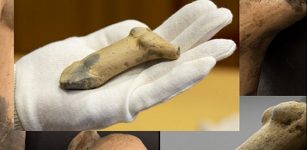 Fragments Of 6,500-Year-Old Figurine Of ‘Venus of Egerszeg’ – Unearthed
Archaeology | Jul 21, 2020
Fragments Of 6,500-Year-Old Figurine Of ‘Venus of Egerszeg’ – Unearthed
Archaeology | Jul 21, 2020 -
 Stunning Images Of Shackleton’s Lost Ship Endurance Discovered Off The Coast Of Antarctica
Archaeology | Mar 9, 2022
Stunning Images Of Shackleton’s Lost Ship Endurance Discovered Off The Coast Of Antarctica
Archaeology | Mar 9, 2022 -
 On This Day In History: Sweden’s Greatest Defeat: Battle Of Kirchholm Was Fought – On Sep 27, 1605
News | Sep 27, 2016
On This Day In History: Sweden’s Greatest Defeat: Battle Of Kirchholm Was Fought – On Sep 27, 1605
News | Sep 27, 2016 -
 Interbreeding With Modern Humans Wiped Out Neanderthals’ Y Chromosomes 100,000 Years Ago
Archaeology | Sep 28, 2020
Interbreeding With Modern Humans Wiped Out Neanderthals’ Y Chromosomes 100,000 Years Ago
Archaeology | Sep 28, 2020 -
 Cursed Dudleytown – What Really Happened In America’s Village Of The Damned In Connecticut
Featured Stories | May 27, 2020
Cursed Dudleytown – What Really Happened In America’s Village Of The Damned In Connecticut
Featured Stories | May 27, 2020 -
 Don’t Underestimate The Rishis – Ancient Sages Were ‘Probably Great Scientists’
News | Sep 26, 2015
Don’t Underestimate The Rishis – Ancient Sages Were ‘Probably Great Scientists’
News | Sep 26, 2015 -
 Ancient Irish Practiced Special Burial Rituals Such As Dismemberment Of Bodies
Archaeology | Sep 18, 2017
Ancient Irish Practiced Special Burial Rituals Such As Dismemberment Of Bodies
Archaeology | Sep 18, 2017 -
 Extremely Rare Roman Glass Vase Adorned With A Message Found In France
Archaeology | Nov 18, 2020
Extremely Rare Roman Glass Vase Adorned With A Message Found In France
Archaeology | Nov 18, 2020 -
 Blackfoot People Carry DNA From Unknown Ancestors Who Came To America 18,000 Years Ago
DNA | Apr 4, 2024
Blackfoot People Carry DNA From Unknown Ancestors Who Came To America 18,000 Years Ago
DNA | Apr 4, 2024 -
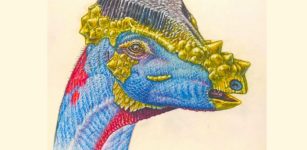 Newly Described Species Of Dome-Headed Dinosaur May Have Sported Bristly Headgear
News | May 24, 2023
Newly Described Species Of Dome-Headed Dinosaur May Have Sported Bristly Headgear
News | May 24, 2023 -
 Remains Of Ancient Predators Shed Light On How Humans Did Or Didn’t Find Food
Archaeology | May 2, 2022
Remains Of Ancient Predators Shed Light On How Humans Did Or Didn’t Find Food
Archaeology | May 2, 2022 -
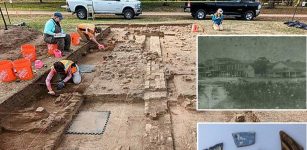 More Than 10,000 Artifacts Unearthed At The Birthplace Of Texas
Archaeology | Mar 12, 2024
More Than 10,000 Artifacts Unearthed At The Birthplace Of Texas
Archaeology | Mar 12, 2024 -
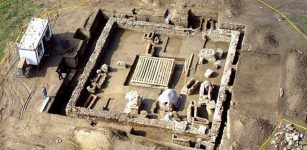 Viminacium Ancient Roman Camp: Sarcophagus With Skeletons, Rich Grave Goods Found In Serbia
Archaeology | Jun 5, 2018
Viminacium Ancient Roman Camp: Sarcophagus With Skeletons, Rich Grave Goods Found In Serbia
Archaeology | Jun 5, 2018 -
 Antisthenes And Diogenes – Founders Of Cynicism Were Ancient Greek Philosophers
Ancient History Facts | Jan 7, 2018
Antisthenes And Diogenes – Founders Of Cynicism Were Ancient Greek Philosophers
Ancient History Facts | Jan 7, 2018 -
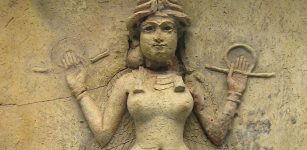 In Ancient Mesopotamia, Sex Among The Gods Shook Heaven And Earth
Featured Stories | Oct 8, 2022
In Ancient Mesopotamia, Sex Among The Gods Shook Heaven And Earth
Featured Stories | Oct 8, 2022 -
 Napta Playa – Egypt’s Stonehenge And Its Ancient Astronomical Alignments
Featured Stories | Feb 18, 2018
Napta Playa – Egypt’s Stonehenge And Its Ancient Astronomical Alignments
Featured Stories | Feb 18, 2018 -
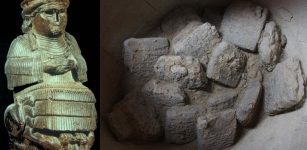 Sensational Find: Huge Cuneiform Archive Of Mysterious Ancient Clay Tablets Discovered In Iraq
Archaeology | Oct 26, 2017
Sensational Find: Huge Cuneiform Archive Of Mysterious Ancient Clay Tablets Discovered In Iraq
Archaeology | Oct 26, 2017 -
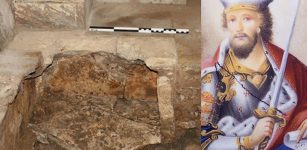 Location Of Burial Place Belonging To Alexander Nevsky’s Son And Grandson – Found
Archaeology | May 3, 2021
Location Of Burial Place Belonging To Alexander Nevsky’s Son And Grandson – Found
Archaeology | May 3, 2021 -
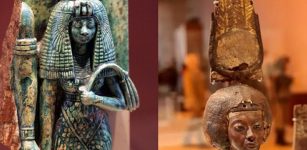 Life And Legacy Of Queen Tiye, Mother Of Akhenaten – Was She Egyptian Or Nubian?
Featured Stories | Jul 20, 2018
Life And Legacy Of Queen Tiye, Mother Of Akhenaten – Was She Egyptian Or Nubian?
Featured Stories | Jul 20, 2018 -
 On This Day In History: Independence Of Greece Is Recognized By The Treaty Of London – On May 7, 1832
News | May 7, 2016
On This Day In History: Independence Of Greece Is Recognized By The Treaty Of London – On May 7, 1832
News | May 7, 2016




